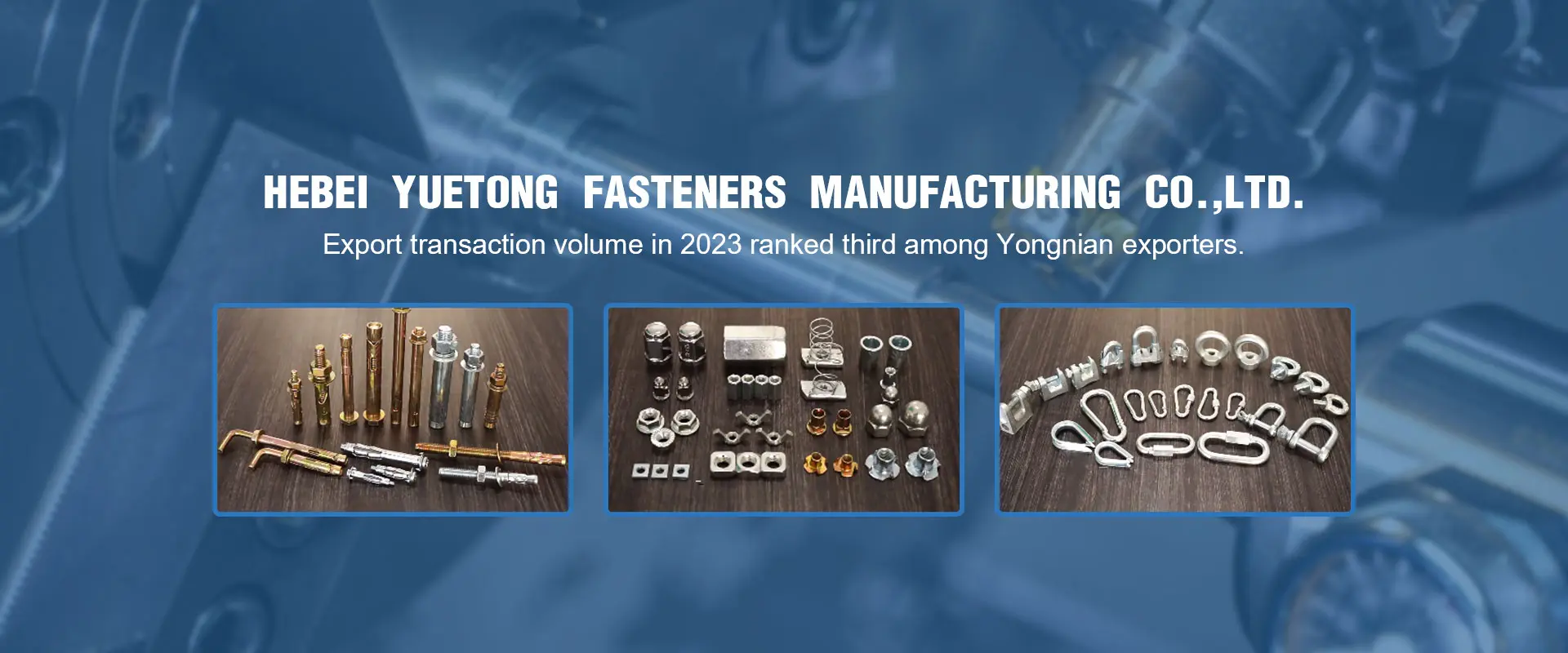Dec . 04, 2024 06:34 Back to list
Innovative Solutions for Securely Fastening Hollow Materials in Construction Applications
Understanding Hollow Fixings A Guide to Efficient Installation
In the world of construction and DIY projects, choosing the right fixing solution is crucial for ensuring stability, safety, and longevity. One of the most effective solutions for securing objects to hollow surfaces—such as drywall or hollow block walls—is the use of hollow fixings. This article aims to explore hollow fixings, their types, applications, and installation processes, highlighting their importance in modern construction and renovation.
What Are Hollow Fixings?
Hollow fixings, also referred to as hollow wall anchors, are specialized fasteners designed for use in hollow wall materials. Unlike traditional bolts and screws that work effectively in solid materials, hollow fixings are engineered to provide support and stability in environments where the wall's structure lacks solid backing. They function by expanding or anchoring themselves against the hollow wall surface, thus distributing the load effectively and preventing the fixing from pulling through.
Types of Hollow Fixings
There are several types of hollow fixings available on the market, each suited for different applications
1. Molly Bolts These are metal anchors with a sleeve that expands behind the wall when the screw is tightened. Molly bolts are ideal for heavy items like cabinets or shelves due to their sturdy design.
2. Toggle Bolts This type consists of a bolt and a pair of folding wings that open and grip the back of the wall once inserted. Toggle bolts can support significant weight and are perfect for hanging heavy mirrors or artwork.
3. Plastic Wall Anchors Lightweight and easy to use, these plastic anchors expand within the wall when the screw is inserted. They are best suited for lightweight fixtures and smaller loads.
4. Snap-off Anchors These feature a dual design—one part is installed into the wall, and the other secures the load. They are user-friendly and provide a reliable option for various home improvement tasks.
Applications of Hollow Fixings
Hollow fixings serve a wide array of applications in both residential and commercial settings
. Some common uses include- Hanging Artwork and Mirrors Hollow fixings are ideal for safely hanging artwork and mirrors on drywall without causing damage.
hollow fixings

- Shelving Systems They provide a robust solution for attaching shelves to hollow walls, allowing homeowners to create efficient storage without compromising wall integrity.
- Light Fixtures For those looking to install lighting in various areas, hollow fixings offer a secure method of mounting light fixtures to ceilings or walls.
- TV Mounting With the increasing trend of wall-mounted televisions, hollow fixings ensure that the heavy weight of the TV is adequately supported.
Installation Process
Installing hollow fixings might seem challenging, but following a straightforward process can lead to successful results
1. Select the Right Fixing Choose a fixing that matches the weight of the object you intend to mount and is suitable for the wall type.
2. Drill a Hole Use a drill with the appropriate size bit to create a hole in the wall where the fixing will be inserted.
3. Insert the Fixture Depending on the type of hollow fixing, either push or slide it into the hole. For toggle bolts, ensure the wings are folded before insertion.
4. Tighten the Screw Secure the fixing by tightening the screw. Ensure it is snug but avoid overtightening, which could damage the wall.
5. Test the Load Before fully trusting the installation, gently test the load it can bear to confirm its stability.
Conclusion
In conclusion, hollow fixings are an essential component for anyone looking to secure objects to hollow walls securely. By understanding the different types available, their applications, and the installation process, individuals can effortlessly enhance their spaces while ensuring safety and durability. Whether you're a seasoned professional or a DIY enthusiast, mastering the use of hollow fixings will undoubtedly expand your skill set and improve your project outcomes.


